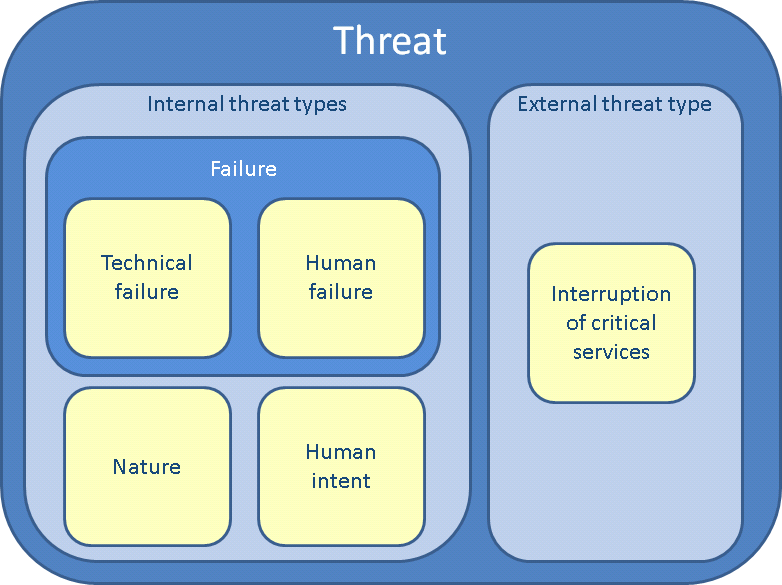Safety
{Graeme - work in progress}
Safety is the degree of protection of persons or objects against non-deliberate sources of risk. The equivalent term used for deliberate sources of risk, is security.
Contents
Distinction between safety and security
The distinction between safety and security lies in the type of threat that is at the source of the risk. While security concerns risk due to human intent (wilful harmful acts), safety concerns all other risk. Shortly put, safety concerns protection from accidents, security concerns protection from crime.
This means that whether a measure is a security measure or a safety measure, depends on the type of risk it is meant to mitigate. A reinforced window for example can be both:
- When installed to prevent harm coming to the inhabitants coming from a gas tank accidentally exploding, it would be a safety measure.
- When installed to protect the inhabitants from terrorist explosions, it would be a security measure.
A measure can also serve as a security and a safety measure at the same time. An example can be found in a door: the fire-delaying properties of the door might serve as a safety measure while the fact that it is protecting against unauthorised entry is a security measure.
Types of safety threats
The word safety is used in two different meanings:
- Safety as a encompassing concept referring to all types of threats, including security threats;
- Safety as a complement to security, including all types of threats except security threats.
In this wiki, we will use the term primarily in its second meaning. Safety thus refers to the following threat types:
Types of threat for functional objects
A threat is a source of potential harm [1]. It includes security threats which originate in wilful act (human intent, such as the threat of violence or terrorism), and safety threats, which originate in non-intentional circumstances (such as the threat of natural hazards, e.g. floodings, volcanic eruptions etc., or man-made hazards, e.g. industrial accidents or technical failure, human failure).
When we look at the concept of threat from the perspective of its functional use (which we can also do for urban objects), a threat can be defined as any circumstance that threatens the continuity or quality of those functions (which include, amongst others, protection of life and economic use).
Threats can in this perspective be classified by their origin. This classification is layered: the first layer discriminates between internal threats that have impact on the internal processes (such as a car hitting a building and causing diminished structural safety for the inhabitants) and external threats that only have impact on external requirements for those processes (such as a discontinuation of electricity supply to a building). Both types of threats will result in diminished continuity or quality of functions provided by the building (reduced safety in the first example, reduced comfort in the second example).
Within internal threats we can distinguish threats that originate from natural processes, threats that originate from failures, and threats that originate in wilful acts. Within threats that originate from failure, we can again distinguish between failures of designs (technical failure) and failures of human action (human failure). This structure is graphically depicted in the (clickable) figure below.
Footnotes and references
- ↑ "An indication of possible violence, harm, or danger.": DHS (2004): National Response Plan. Department of Homeland Security: Washington. Online: http://www.scd.hawaii.gov/documents/nrp.pdf [2011-03-23].


